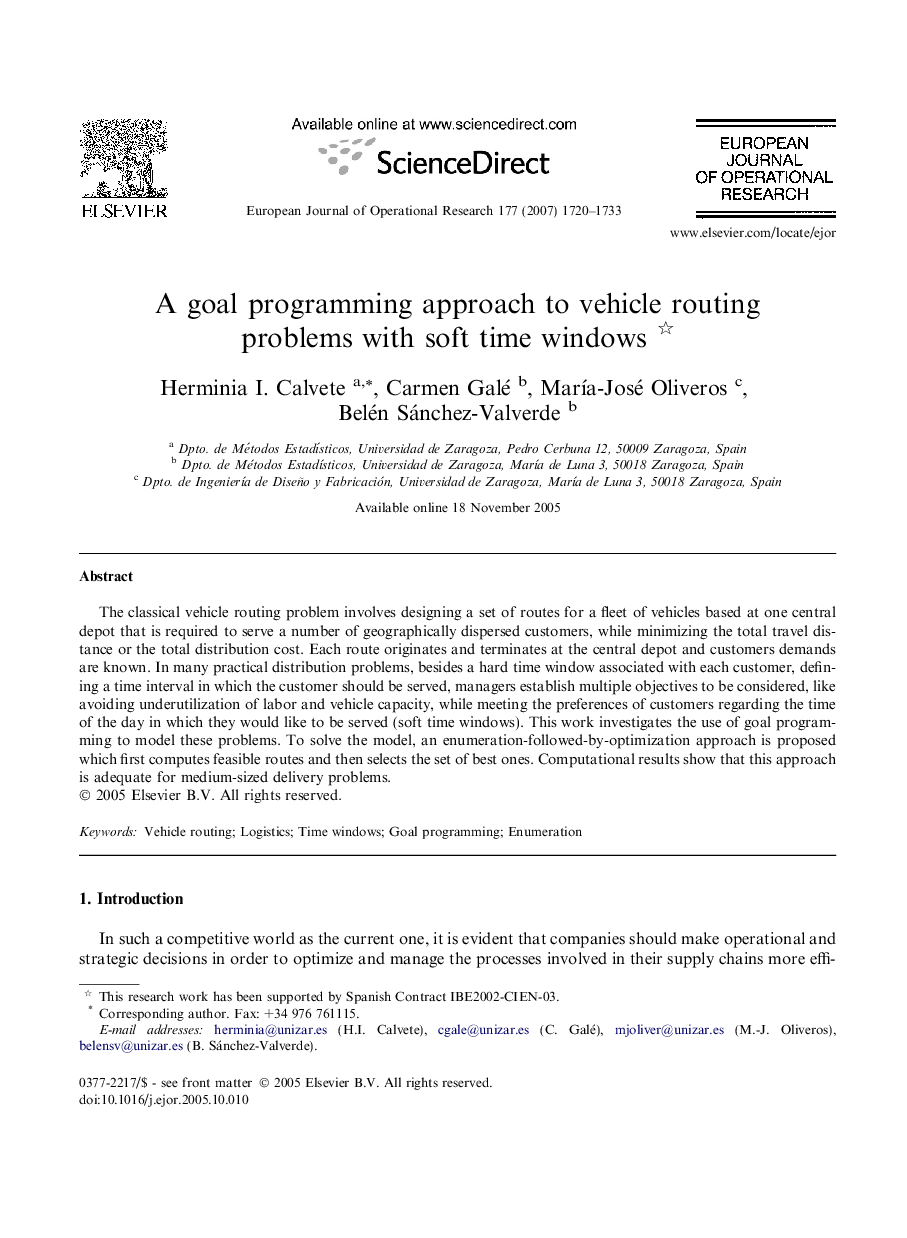| Article ID | Journal | Published Year | Pages | File Type |
|---|---|---|---|---|
| 483264 | European Journal of Operational Research | 2007 | 14 Pages |
The classical vehicle routing problem involves designing a set of routes for a fleet of vehicles based at one central depot that is required to serve a number of geographically dispersed customers, while minimizing the total travel distance or the total distribution cost. Each route originates and terminates at the central depot and customers demands are known. In many practical distribution problems, besides a hard time window associated with each customer, defining a time interval in which the customer should be served, managers establish multiple objectives to be considered, like avoiding underutilization of labor and vehicle capacity, while meeting the preferences of customers regarding the time of the day in which they would like to be served (soft time windows). This work investigates the use of goal programming to model these problems. To solve the model, an enumeration-followed-by-optimization approach is proposed which first computes feasible routes and then selects the set of best ones. Computational results show that this approach is adequate for medium-sized delivery problems.
